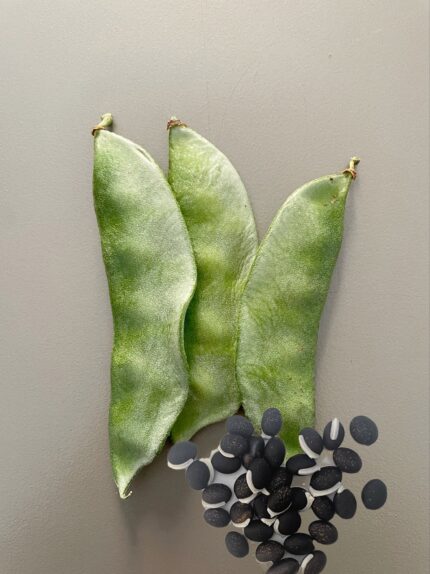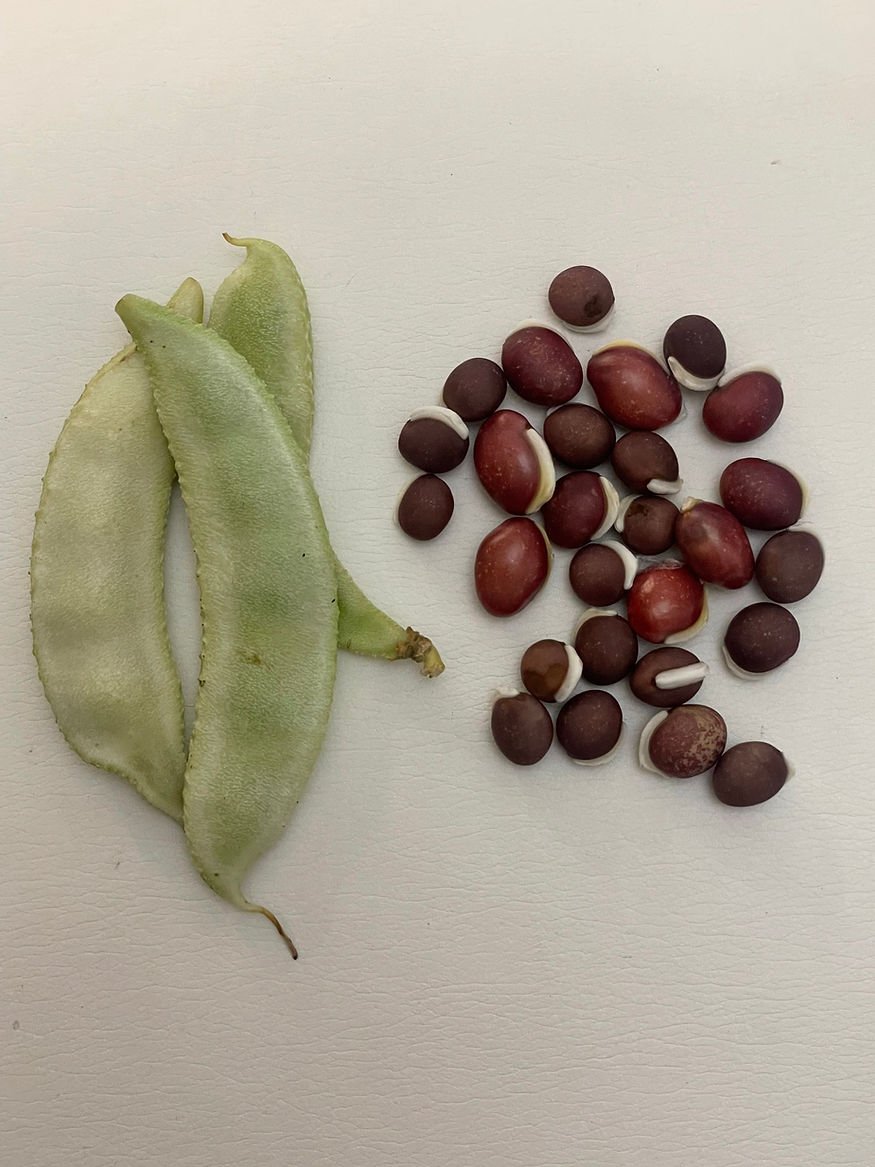White Short Broad Beans are a variety of broad beans (also known as **fava beans**) that are known for their short stature and white-colored beans. These beans are favored for their early maturing ability, compact plant size, and versatility in the kitchen. Below is a detailed overview of this variety:
1. Appearance:
– Beans: The beans of White Short Broad Beans are white and have a smooth, kidney-shaped appearance. The size of the beans is generally medium, and they have a creamy, starchy texture when cooked.
– Pods: The pods of White Short Broad Beans are typically shorter compared to larger broad bean varieties, ranging from 3 to 5 inches (7-12 cm) in length. They contain 4-6 beans each.
– Plant Height: The plant itself is short compared to other broad bean varieties, usually growing between 2 and 3 feet (60-90 cm)in height. This compact size makes them ideal for smaller gardens or container growing.
2. Plant Characteristics:
– Compact Growth: White Short Broad Beans have a bushy growth habit, making them well-suited for small garden spaces. Their shorter height makes them easy to harvest without the need for extensive staking or support.
– Flowering: The plants produce white or pale flowers, which are typical of broad bean varieties. These flowers eventually give way to the characteristic green pods.
– Yield: Although the plants are smaller, they can produce a high yield of beans, particularly if the growing conditions are favorable.
3. Cultivation:
– Climate: Like other broad beans, White Short Broad Beans thrive in cooler climates and are often planted in early spring or late autumn. They are tolerant of light frosts, making them suitable for early or late-season planting.
– Soil: They prefer well-drained, fertile soil that is rich in organic matter. Broad beans are also nitrogen-fixing plants, which means they improve soil health by converting nitrogen from the air into a form that other plants can use.
– Watering: These beans require consistent moisture but do not like waterlogged soil. Regular watering is necessary, especially during dry spells, but care should be taken not to overwater.
4. Nutritional Value:
– Protein: Like all broad beans, White Short Broad Beans are a great source of plant-based protein**, making them an excellent option for vegetarians and vegans.
– **Fiber**: These beans are high in dietary fiber, which supports digestive health, regulates blood sugar levels, and contributes to a feeling of fullness.
– Vitamins and Minerals: They are rich in folate, iron, potassium, magnesium, and B-vitamins, which are essential for overall health and energy production.
– Low in Fat: Broad beans, including this variety, are naturally low in fat and are a heart-healthy food option.
5. Culinary Uses:
– Fresh Beans: White Short Broad Beans can be eaten fresh when they are young. After cooking (boiling or steaming), they can be added to soups, stews, and salads, or served as a side dish. They can also be mashed or pureed for dips or spreads, such as broad bean hummus.
– Dried Beans: If allowed to mature, the beans can be harvested and dried for long-term storage. Dried beans are typically used in hearty soups, curries, and casseroles**. Dried broad beans require soaking overnight before cooking.
– Flavor: These beans have a mild, nutty flavormwith a slightly earthy taste. The creamy texture and subtle flavor make them a versatile ingredient in many dishes.
– Traditional Dishes: Broad beans are often used in Mediterranean, Middle Eastern, and North African cuisines, in dishes such as ful medames(Egyptian fava bean stew) and various bean-based dips.
6. Health Considerations:
– Toxins: Like all broad beans, White Short Broad Beans contain naturally occurring toxins known as vicine and convicine. These toxins can cause a condition called favism in susceptible individuals. However, these toxins are deactivated by cooking, so the beans should always be thoroughly boiled or steamed before eating.
– Favism: People with favism, a genetic condition that affects the metabolism of these toxins, should avoid eating broad beans as it can lead to hemolytic anemia (destruction of red blood cells).
7. Storage:
– Fresh Beans: Fresh White Short Broad Beans should be stored in the refrigerator and used within a week. If you have excess beans, they can be blanched and frozen for longer storage.
– Dried Beans: Dried beans can be stored in an airtight container in a cool, dry place for several months. To cook dried beans, they should be soaked overnight in water and then boiled for 45 minutes to an hour or until tender.
8. Other Uses:
– Soil Enrichment: Like other broad beans, White Short Broad Beans help enrich the soil by fixing nitrogen. They are often used in crop rotation systems to improve soil health for subsequent crops.
– Livestock Feed: In some regions, broad beans are also used as fodder for animals, as they are high in protein.









Reviews
Clear filtersThere are no reviews yet.